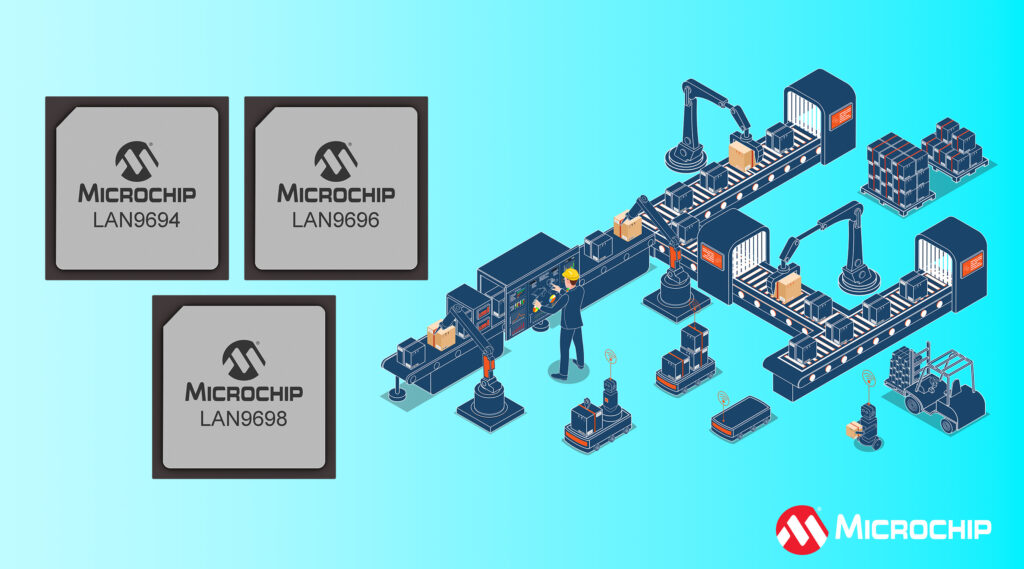New LAN969x Next-Generation Ethernet Switches from Microchip feature Time Sensitive Networking and Scalable Port Bandwidths from 46 Gbps to 102 Gbps.
The growth of the industrial automation market encompasses innovative technologies like Machine Learning (ML) and robotic systems. Embedded solutions with deterministic communication are essential for industrial automation applications to control, monitor and process data. To provide designers with a reliable and robust network solution with deterministic communication, Microchip Technology has announced its next-generation of LAN969x Ethernet switches with Time Sensitive Networking (TSN), scalable bandwidths from 46 Gbps to 102 Gbps and a powerful 1 GHz single-core Arm® Cortex®-A53 CPU.
For applications that require greater redundancy, the LAN969x Ethernet switches can be configured with High-availability Seamless Redundancy (HSR) and Parallel Redundancy Protocol (PRP) – hardware protocols that provide zero-loss redundancy in Ethernet networks. The LAN969x Ethernet switches support multiple HSR and PRP Redundancy Box (RedBox) instances that can operate in parallel and in series, as well as at Ethernet port speeds from 10 Mbps to 10 Gbps.

The LAN969x can implement a QuadBox, which is a function that connects two HSR networks to each other. This feature is particularly useful in applications where high reliability and zero downtime are critical. Alternative solutions that implement a QuadBox typically require multiple different components that can drive up design complexity and system costs.
The LAN969x Ethernet switches are integrated with High-availability Seamless Redundancy (HSR) and Parallel Redundancy Protocol (PRP) for ease of design, and are highly configurable with options of up to 30 ports. The Ethernet ports support multiple interfaces including RGMII, SGMII, QSGMII, USGMII, and USXGMII. The LAN969x family targets secure and safety-critical applications where high- port-count 10M/100M/1G/2.5G/10G switching links are required.
The LAN969x family is available with security add-ons such as secure boot and secure firmware execution based on the customer’s root-of-trust manufacturing process. Security is provided through Ternary Content Addressable Memory (TCAM)-based frame processing using a Versatile Content Aware Processor (VCAP), Arm Trusted Firmware methodology for fast secure boot, crypto libraries and hardware security accelerators for boot and code encryption, and one-time programmable immutable key storage.
